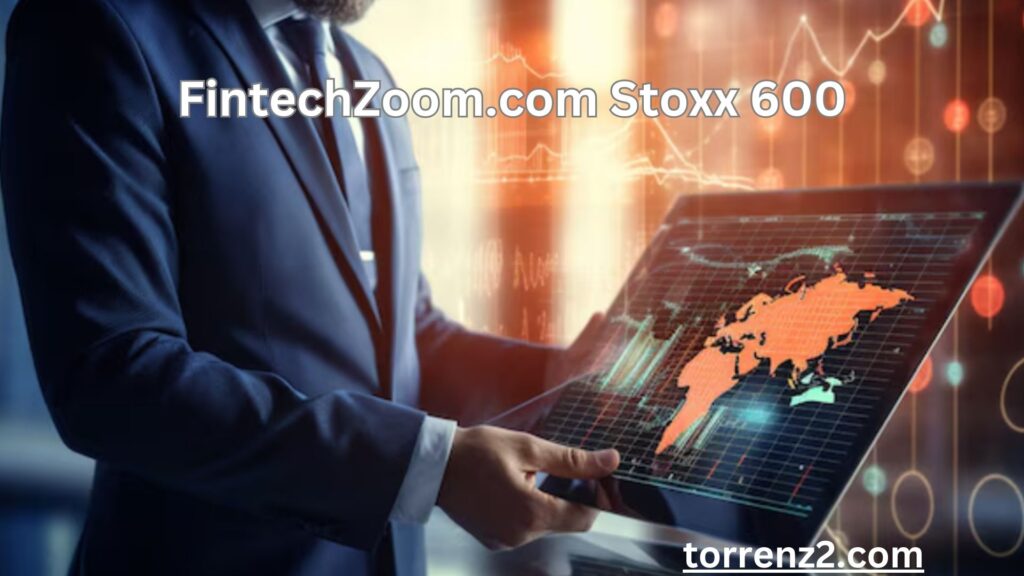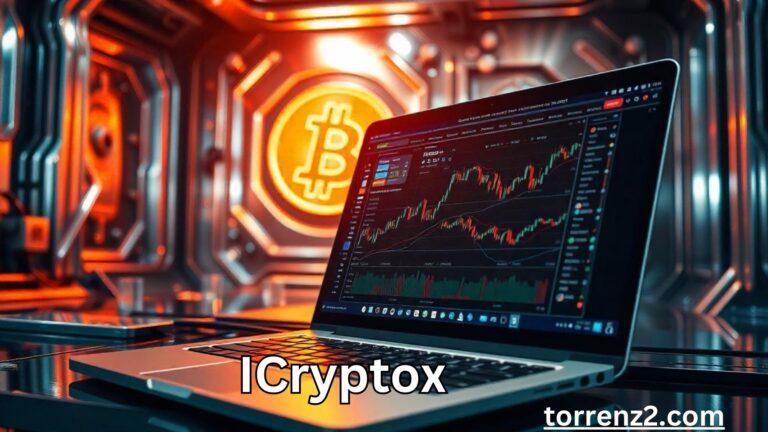
The FintechZoom.com Stoxx 600 Index is one of the most prominent and widely tracked indices in Europe. Representing 600 of the largest companies across 17 European countries, the Stoxx 600 is an essential tool for investors seeking to monitor European equity markets. This guide will explore the Stoxx 600 in detail, shedding light on its composition, performance, and relevance in the global market.
By delving into how financial technology and fintech companies are reshaping the European stock market, especially within the Stoxx 600, we’ll also cover key insights for investors looking to make informed decisions based on real-time market data and performance metrics.
What is the Stoxx 600 Index and Why Is It Important?
The FintechZoom.com Stoxx 600 Index tracks the performance of 600 of the largest, most liquid companies in Europe. It covers a diverse array of sectors, from technology to healthcare, and provides a snapshot of the overall market performance in Europe.
Understanding the Stoxx 600 Index Composition
The Stoxx 600 is divided into four primary categories:
- Large-cap stocks
- Mid-cap stocks
- Small-cap stocks
- Sectoral breakdowns
It’s a broad market index, meaning that it provides a comprehensive representation of Europe’s stock market dynamics. This is important for both institutional and retail investors who want to diversify their portfolio with top European equities.
Each of these companies is weighted by market capitalization, meaning larger companies have more influence on the index’s movement than smaller ones. Some of the major sectors included are financials, consumer goods, technology, and healthcare, reflecting the economic diversity of the region.
How the Stoxx 600 Measures Market Performance
The FintechZoom.com Stoxx 600 is updated regularly to reflect changes in the market, with each stock’s performance contributing to the overall index performance. This makes it an excellent barometer for the health of the European stock market. The index also serves as a reference point for many financial products, such as ETFs and mutual funds, which track its performance. Investors use it to gauge the market trends and adjust their strategies accordingly.
Key Features of the Stoxx 600 Index
- Liquidity: The index only includes stocks with high liquidity, ensuring that investors can easily enter and exit positions without significant price slippage.
- Diversity: The Stoxx 600 encompasses companies from 17 European countries, providing a diversified exposure to different economies and sectors.
- Market Cap Representation: Companies in the index range from mid-cap to large-cap, offering a blend of growth potential and stability.
How Does the Stoxx 600 Compare to Other Global Stock Indices?
When comparing the Stoxx 600 to other major indices such as the S&P 500 or the FTSE 100, it’s important to consider the differences in market focus, regional influence, and the types of companies that comprise these indices.
Stoxx 600 vs. S&P 500: A Performance Comparison
The S&P 500 is a major U.S.-based index, whereas the Stoxx 600 represents European companies. Historically, the S&P 500 has outperformed the Stoxx 600 due to the strength of the U.S. technology sector. However, the Stoxx 600 has shown resilience, especially in sectors like financials and healthcare.
In terms of performance, while the S&P 500 has benefited from the dominance of tech giants, the Stoxx 600 offers exposure to a broader mix of industries. Investors looking for global diversification often use the Stoxx 600 as a hedge against volatility in the U.S. stock market.
Stoxx 600 in the Context of European Stock Performance
Unlike the FTSE 100, which is UK-centric, the Stoxx 600 spans multiple European countries, making it a more diversified measure of the overall European market. It includes companies from the Eurozone, Scandinavia, and other major European economies.
The Stoxx 600 also has a higher proportion of tech stocks compared to some other European indices, providing better exposure to the growing European tech sector.
The Stoxx 600’s Role in the Global Market
While not as globally recognized as the S&P 500, the Stoxx 600 is considered a vital indicator of European economic health. Many global investors use the index to gauge the stability of European markets and to make cross-border investment decisions.
How Has Fintech Influenced the European Stock Market, Specifically the Stoxx 600?
The intersection of financial technology and stock market analysis has had a profound impact on how the FintechZoom.com Stoxx 600 is tracked and interpreted. Innovations in big data, artificial intelligence (AI), and blockchain are revolutionizing market analysis, and the Stoxx 600 is no exception.
The Rise of Fintech in European Equity Markets
Over the past decade, fintech companies have grown rapidly in Europe, significantly influencing the way stocks are traded and analyzed. Fintech platforms like Fintech Zoom provide real-time data on stock performance, offering investors better insight into the market and enabling them to make quicker, more informed decisions. These technological advances have made it easier to track the performance of Stoxx 600 companies, boosting investor confidence.
Investment Opportunities in Fintech Companies within the Stoxx 600
Many Stoxx 600 companies are now adopting fintech solutions to optimize their operations. For instance, European banking stocks are increasingly leveraging AI to predict market trends, while insurance and investment firms use blockchain for secure transactions.
Fintech innovation within the Stoxx 600 has also led to the rise of fintech-focused ETFs, allowing investors to capitalize on the growing demand for financial technology solutions in the European market.
The Impact of Financial Technology on Stock Market Analytics
Fintech platforms like Fintech Zoom provide a wealth of information for market analysts and investors, including live performance tracking of the Stoxx 600 index. These platforms utilize AI to predict price movements and market behavior, helping investors gain a deeper understanding of market trends. The use of machine learning and data analytics allows for more accurate forecasts, enabling smarter investment decisions in European stocks.
How to Invest in Stoxx 600 Companies: A Beginner’s Guide
Investing in FintechZoom.com Stoxx 600 companies offers exposure to Europe’s largest and most liquid companies. Whether you’re an experienced investor or just getting started, this guide will walk you through the steps to start investing in the Stoxx 600.
Investment Strategies for Stoxx 600 Companies
There are several ways to invest in companies listed on the Stoxx 600:
- ETFs: Exchange-Traded Funds that track the Stoxx 600 Index provide broad market exposure with relatively low fees.
- Mutual Funds: Actively managed funds that invest in companies within the Stoxx 600 offer personalized strategies.
- Direct Stock Investments: Purchasing stocks from individual Stoxx 600 companies provides the potential for higher returns but requires more active management.
The Best Performing Stocks in the Stoxx 600 This Year
The top-performing stocks in the FintechZoom.com Stoxx 600 include companies in sectors like technology, consumer goods, and financials. Some of the standout performers this year have been fintech firms, healthcare companies, and renewable energy stocks. Tracking these companies is crucial for understanding which sectors are driving European market growth.
How to Track and Analyze Stoxx 600 Stocks
By using market analytics platforms like Fintech Zoom, you can easily track the performance of individual Stoxx 600 stocks. These platforms offer real-time data, advanced charting tools, and historical performance metrics, allowing you to make informed decisions.
Why Should Investors Pay Attention to Stoxx 600’s Market Trends?
Understanding the market trends of the Stoxx 600 is essential for predicting potential growth in the European market. By analyzing these trends, investors can identify the best opportunities for long-term growth.
How Stoxx 600 Performance Indicates Market Health
The Stoxx 600 Index provides valuable insights into the economic stability of Europe. A rise in the index typically signals economic growth, while a decline may indicate market contraction or economic instability. Monitoring Stoxx 600 trends can help investors make timely decisions about when to buy or sell stocks.
Stoxx 600: A Leading Indicator for European Market Volatility
The Stoxx 600 serves as an important leading indicator of market volatility in Europe. Changes in the index can be early signals of broader economic shifts, making it crucial for investors who want to stay ahead of market fluctuations.
The Economic Data Driving Stoxx 600 Trends
Economic reports, such as GDP growth, employment figures, and inflation data, all have a direct impact on the performance of the Stoxx 600. By staying updated on this data, investors can better understand the market forces at play and adjust their strategies accordingly.
Conclusion
The FintechZoom.com Stoxx 600 is an essential index for anyone looking to invest in European equities. By understanding its components and market trends, along with the growing influence of fintech technologies, investors can make smarter, more informed decisions. Whether you’re looking for broad market exposure or targeting specific sectors, the Stoxx 600 offers a robust foundation for a diversified investment strategy.
FAQs
What is the Stoxx 600 and how does it work?
The Stoxx 600 Index tracks the performance of 600 large companies across Europe. It reflects the overall health of the European stock market and helps investors monitor trends and performance across multiple sectors.
How can I invest in companies listed on the Stoxx 600?
Investors can invest in the Stoxx 600 through ETFs, mutual funds, or by buying stocks directly from companies listed in the index. Many investment platforms allow direct access to Stoxx 600 ETFs and related financial products.
How does fintech impact the Stoxx 600?
Fintech companies are transforming how stocks in the Stoxx 600 are analyzed and traded. Technologies like AI, blockchain, and big data provide investors with real-time insights, enabling faster and more accurate decision-making.




